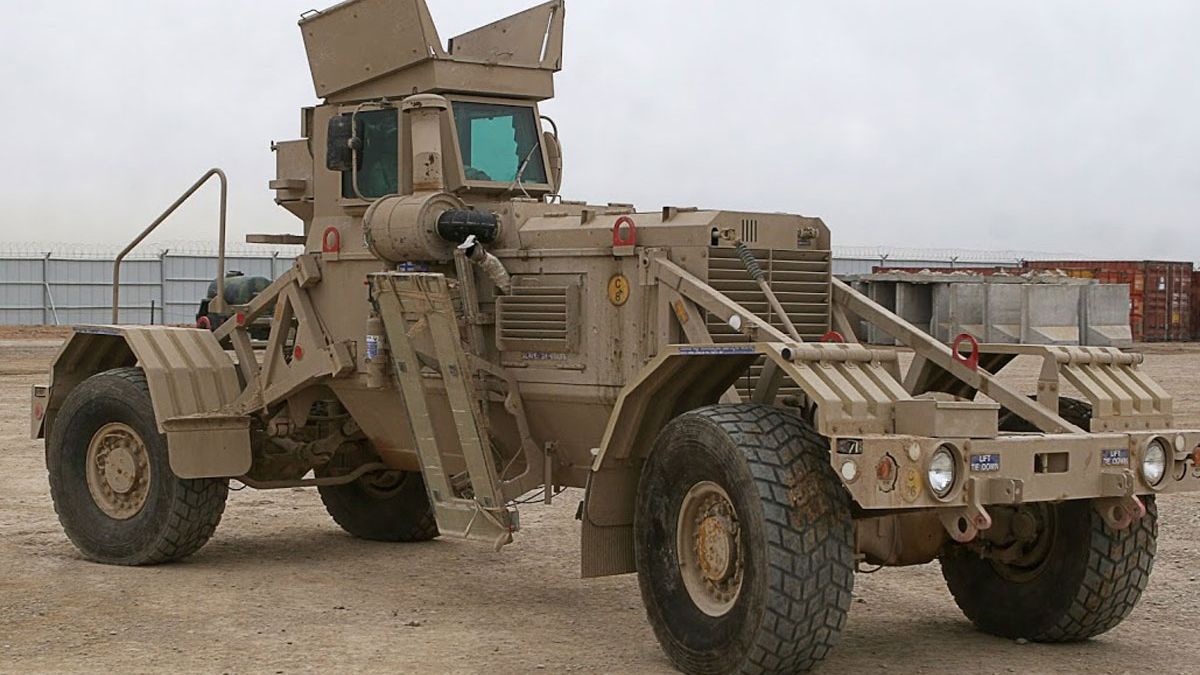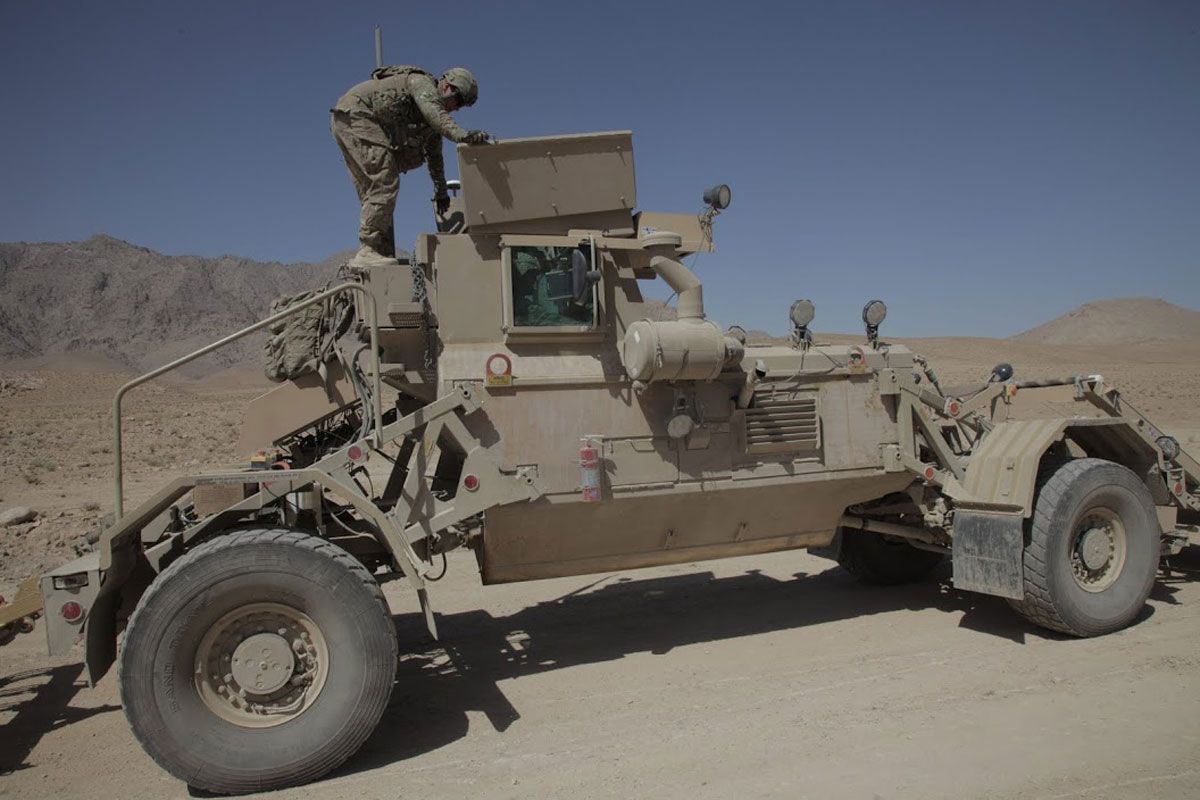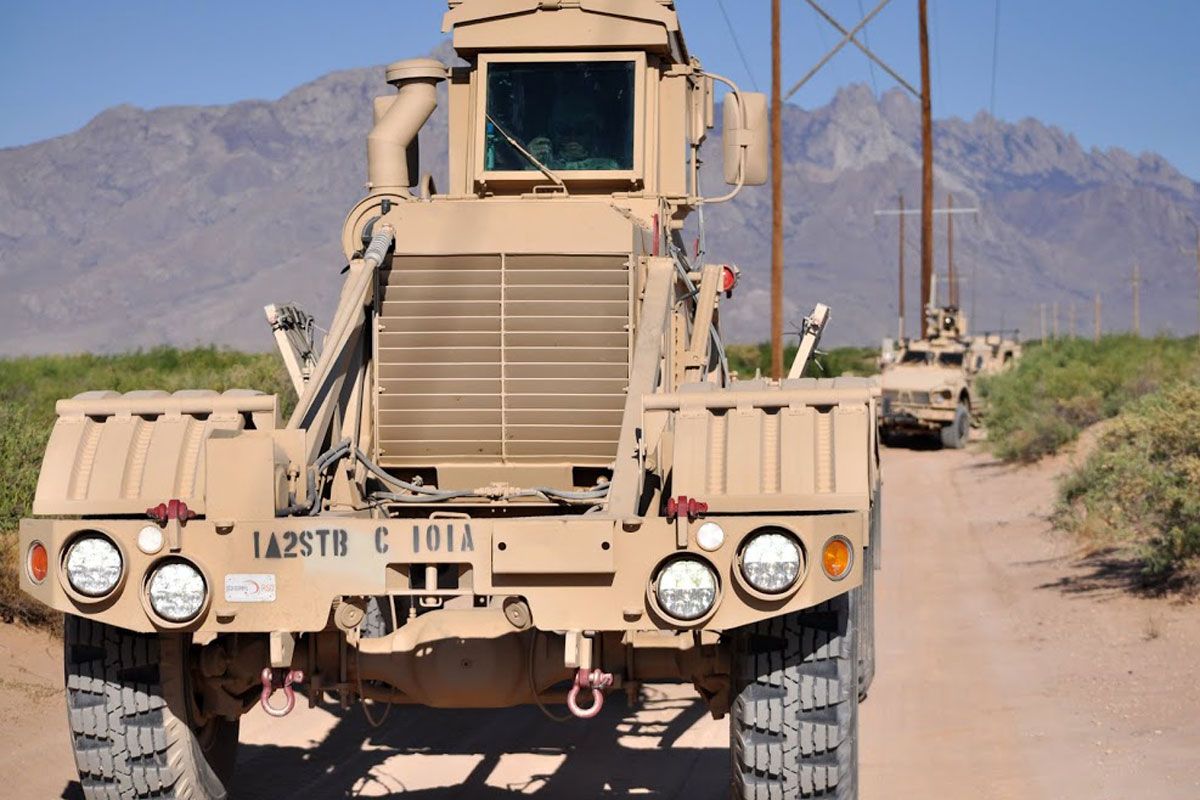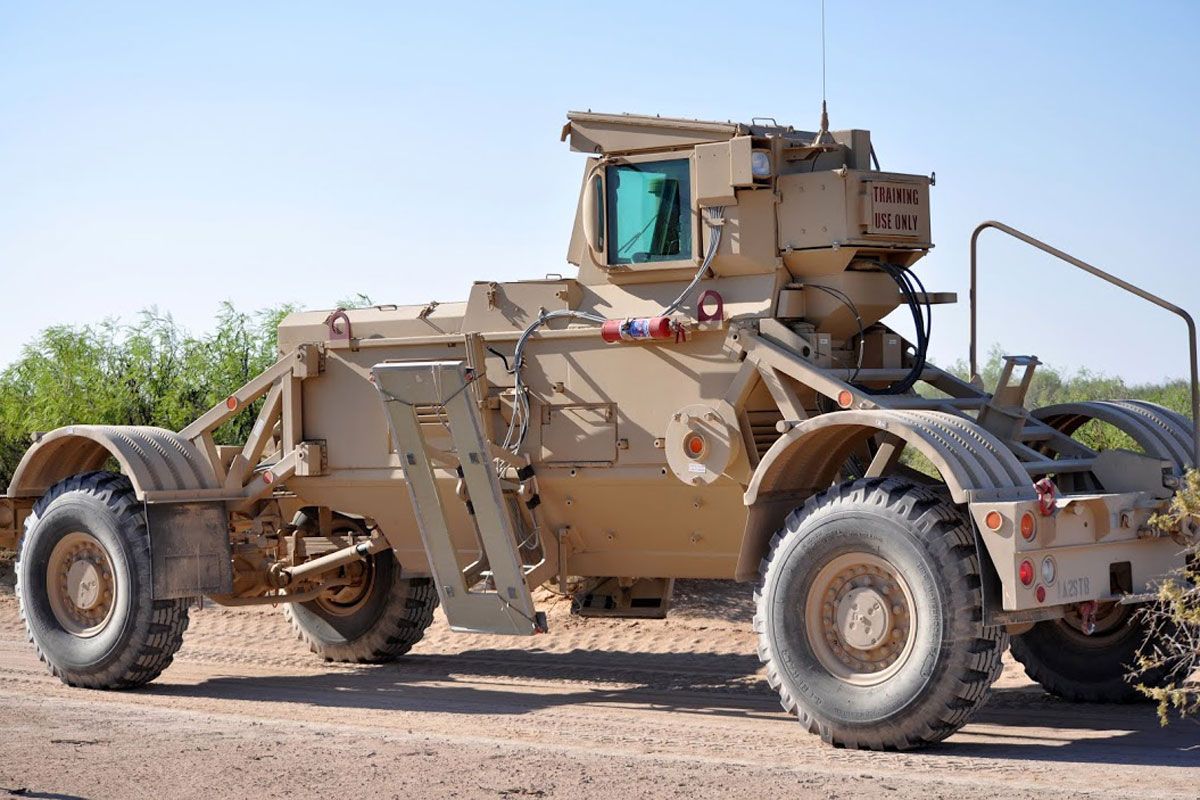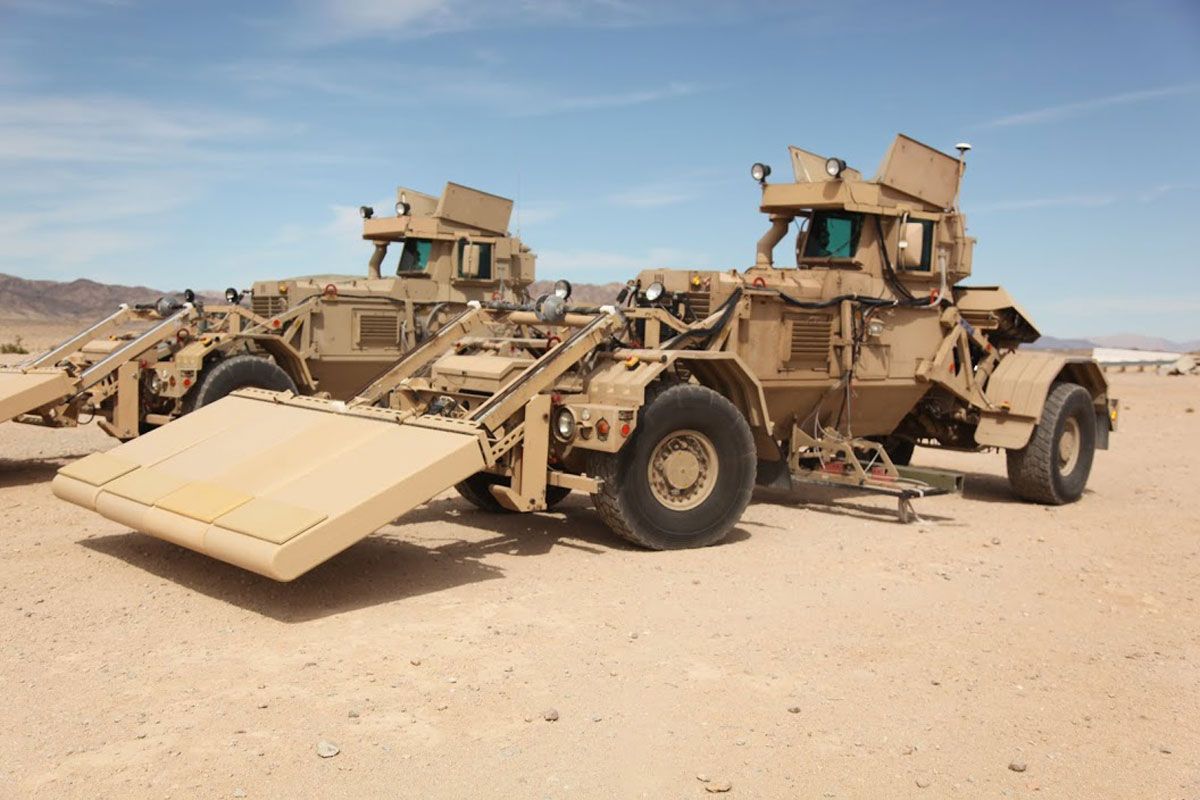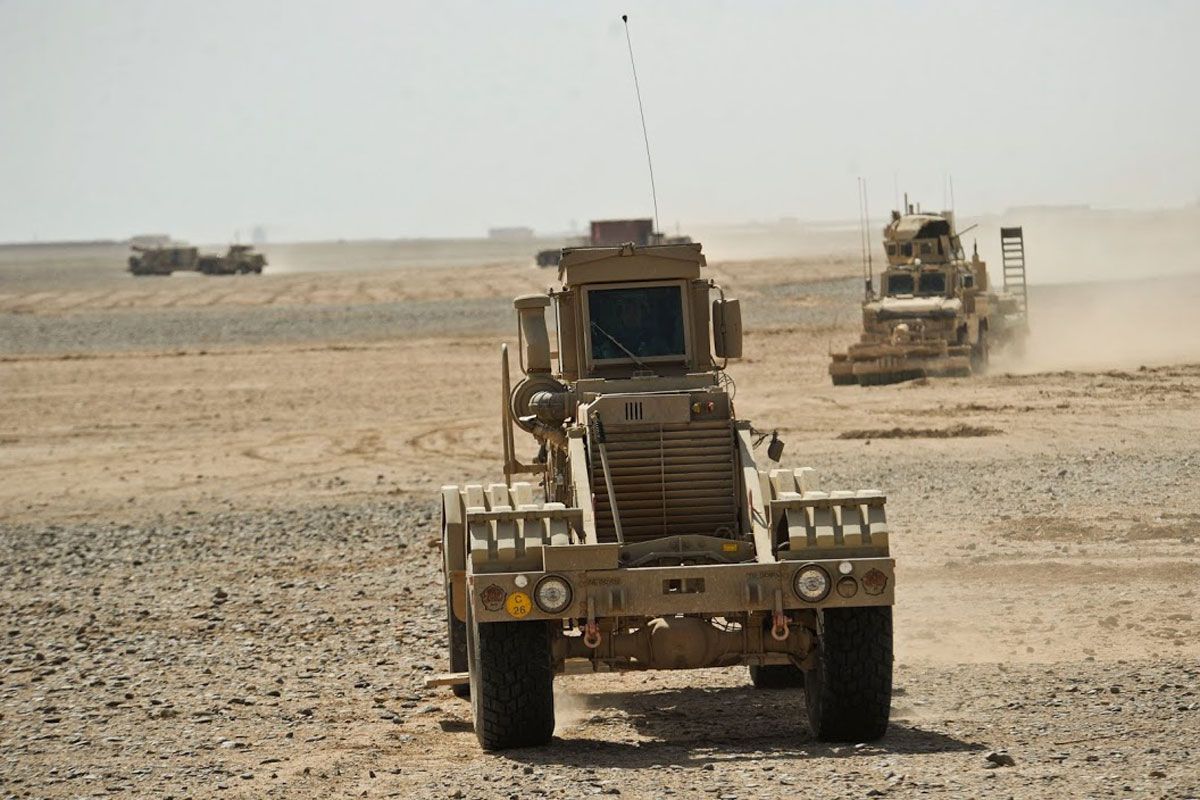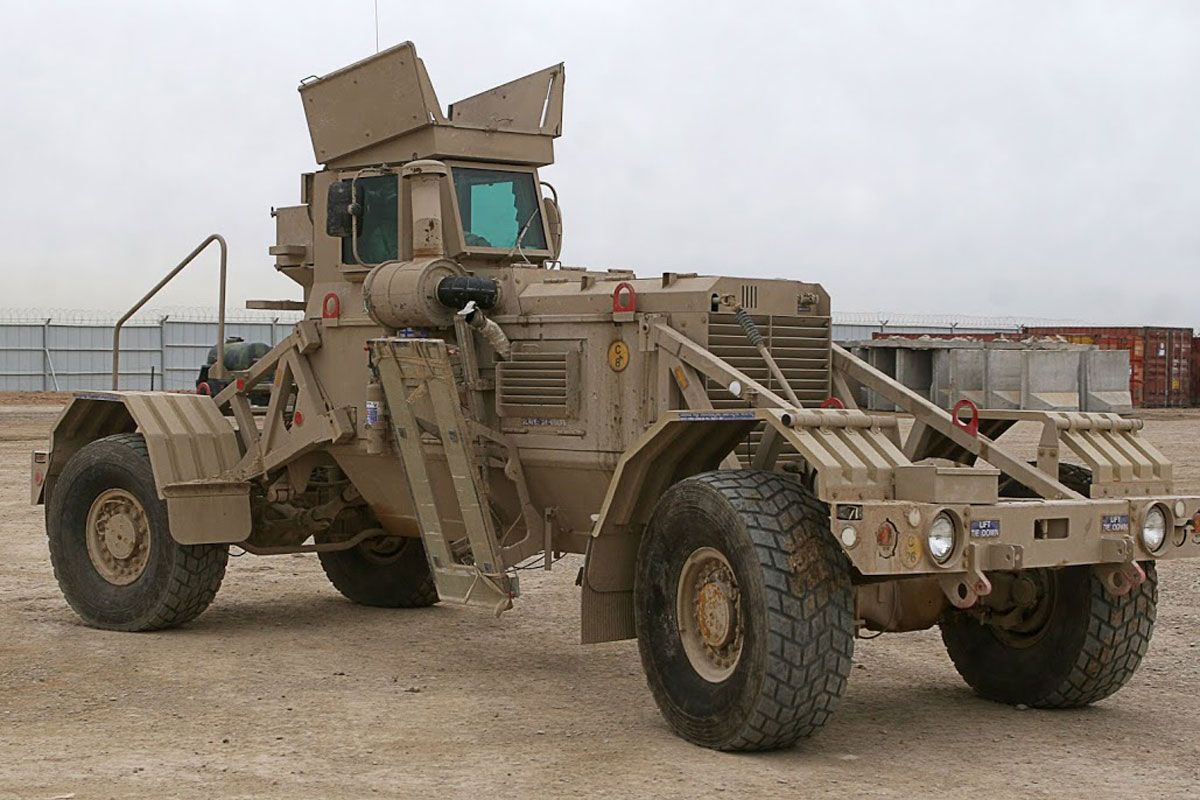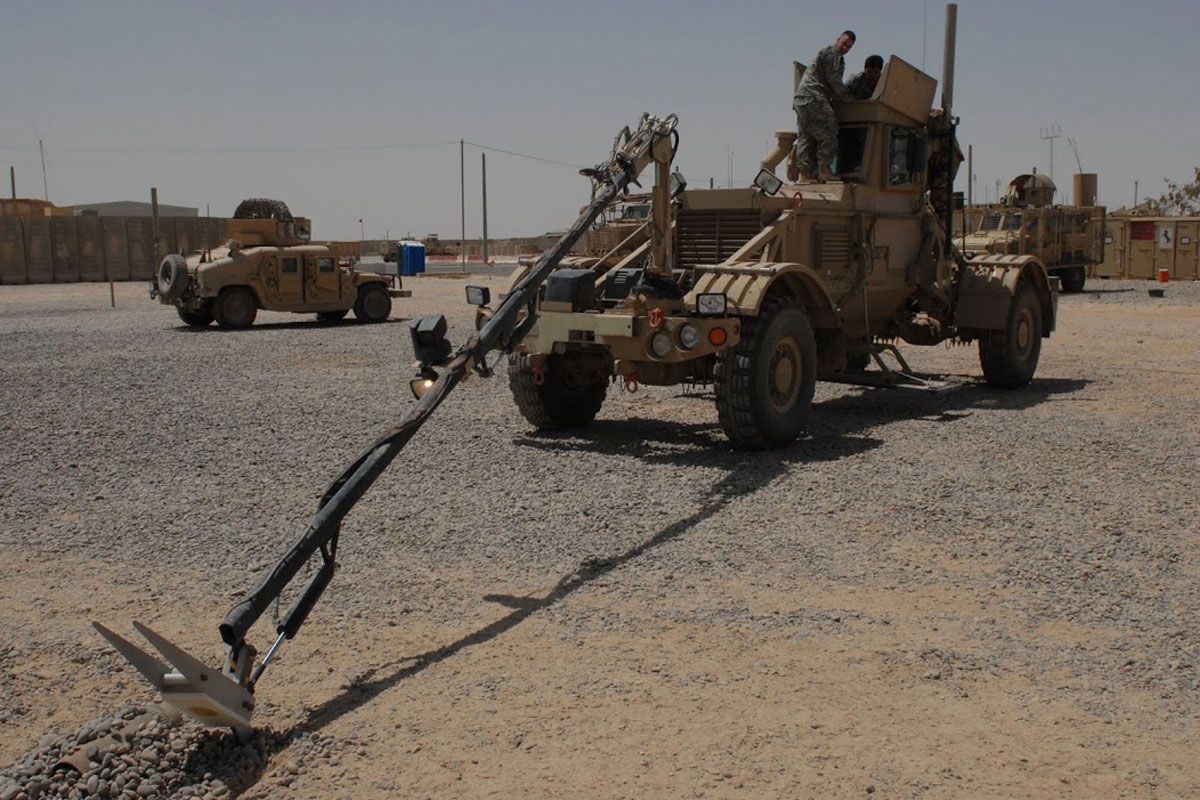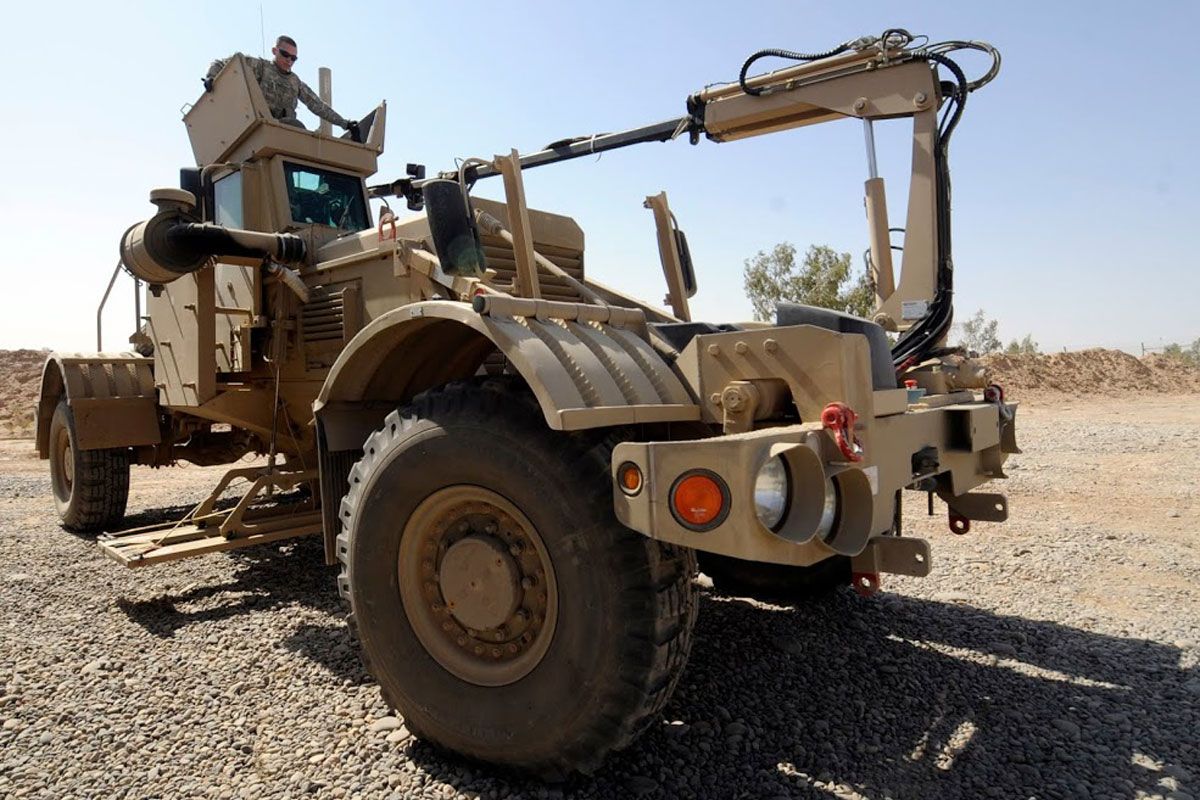Celebrated every year on the last Monday of May, Memorial Day originated as Decoration Day after the American Civil War in 1868. Before the 20th century, competing Union and Confederate holiday traditions celebrated on different days had merged, and Memorial Day eventually extended to honor all Americans who died while serving in the military. As usual, we here at Top Speed celebrate Memorial Day by having a closer look at the vehicles used by the U.S. Army,->ke3536 and especially those that were conceived to protect the lives of our brave soldiers. One such vehicle is the Husky MkIII Vehicle Mounted Mine Detector.
Developed in the 1970s for the South African Defense Force, the Husky Vehicle Mounted Mine Detector (VMMD) has been sent to clear military convoy routes in just about any major armed conflict around the world, including the Middle East, Africa, and Southern Europe. Dubbed "Chubby," the system received several upgrades throughout the year, now being sold as the Mk III. Although Critical Solutions International has developed a second-generation, Husky 2G model, the first-gen based MkIII continues to be popular among armed forces around the world.
That's far from surprising given that the vehicle is blast survivable, field repairable, and has been subjected to more than 6,500 landmine and IED strikes with minimal operator casualties. These skills enable the Husky MkIII to not only protect the operator controlling it, but also provides safe passage for military convoys in the most dangerous environments around the world. While most military systems are built to destroy buildings and harm human beings, the Husky Mk III was created with the sole purpose of protecting those who risk their lives on a daily basis.
Continue reading to learn more about the Husky MkIII Vehicle Mounted Mine Detector.
2017 Husky MkIII Vehicle Mounted Mine Detector
- Make: Array
- Model: 2017 Husky MkIII Vehicle Mounted Mine Detector
2018 Husky MkIII Vehicle Mounted Mine Detector
- Make: Array
- Model: 2018 Husky MkIII Vehicle Mounted Mine Detector
- [do not use] Vehicle Model: Array
Exterior
Essentially a singe-seat truck with the front and rear axles extended far from the body, the Husky MkIII is quite massive to look at. The mine-detecting vehicle is 7,340mm (289 inches) long, 2,530 mm (99.6 inches) wide, and 3,242mm (127.6 inches) tall. Its wheelbase measures 5,230mm (205.9 inches). The cabin is mounted rearward and it's equipped with basic, round headlamps, taillights, and turn signals.
The shell incorporates a V-shaped hull offering optimum protection against blasts. It also has a front-mounted four-jet marking bar and a center-body-mounted 12-jet marking bar for marking the threat location underneath. Designed to detect landmines and improvised explosive devices (IEDs) with high probability of detection and low false alarm rate, the Husky MkIII has a threat detecting sensor that can be controlled automatically to adjust in various terrains. It also comes with a Mine Detonation Trailer set to detonate any left out mines.
The standard equipment list also includes NIITEK's VISOR 2500 Ground Penetrating Radar that detects the mines and explosives by using hydraulically-controlled deploy and retract modes. This feature can be optionally upgraded to include EMI Coils three-meter Wide Scan for See-Deep Metal Detector Array.
One of Husky's most impressive features is that it can run over pressure-fused anti-vehicle landmines without exploding them.
The vehicle is designed to withstand high detonation and can be brought to operating conditions within two hours after an explosion thanks to its unique modular configuration so that in the event of an IED detonation, vehicle components will break apart in a predictable fashion.
Interior
Like most military vehicles, the cabin is rather cramped and lacks most comfort features. It is equipped with an air conditioning system though to protect the operator from extreme weather conditions. The cabin is fitted with a bullet-proof glass window and a single hatch provides access through the roof section. The navigation system includes NGC LN-270 INS with GPS, SAASM anti-jamming module, and Starfire DGPS module.
Drivetrain
The Husky MkIII gets its juice from a 6.4-liter, six-cylinder turbodiesel engine built by Mercedes-Benz. The mill is JP-8 compliant, meaning it can use the special jet fuel specified by the U.S. military. The kerosene-based fuel is similar to the commercial aviation's Jet A-1 fuel, but has corrosion inhibitors and anti-icing addictives. It was first introduced at NATO bases in 1978 and is projected to remain in use at least until 2025.
The massive powerplant pumps 201 horsepower and a whopping 553 pound-feet of torque to the wheels, giving the MkIII just enough power to overcome rough terrain and climb 70-percent grade surfaces. The 23-inch under hull and 16-inch under axle clearance also helps it tackle the roughest roads with ease. The engine mates to an Allison-made, five-speed automatic and two-speed transfer case with 1:2 ratio.
Accelerating from 0 to 31 mph takes 16 seconds, and while that may not sound like a lot when compared to a standard vehicle, you need to keep in mind the fact that the Mk3 tips the scales at 18,409 pounds. Maximum speed in "sustained" mode is 45 mph, while top speed in "burst" mode goes up to 59 mph. On a 20-percent grade, the Husky can climb at up to 11 mph. Speed decreases to 4.4 and 3.3 mph on 60-percent and 70-percent grades, respectively.
The truck has a fuel capacity of 40 gallons, which gives it a maximum fuel range of 497 miles. It rides on two-piece steel rims wrapped in 450/80-R20 tires and features a central tire inflation system. Pressure varies between 8.7 and 40.6 psi, depending on the surface it is being driven on.
Operators
As of 2016 there are more than 400 examples in use worldwide, both in military and civilian service. The U.S. Army and U.S. Marine uses some 130 VMMD systems, most of which have been deployed in the Middle East, currently the most active war zone, and Bosnia. The Spanish Army and the Canadian Forces have deployed several Husky vehicles in Afghanistan, while the British Army used in Croatia in the 1990s. The French an Turkish armies, and Uganda's Defense Force also use various versions of the mine detection system.
Conclusion
While Memorial Day is slowly becoming a three-day weekend of barbecuing and drinking, we must not forget to take a moment to thank those who sacrificed themselves for freedom as well as the troops currently on active duty around the world. The Husky Mk III might not have nothing in common with the civilian vehicles we usually review, but Memorial Day is a great day to look beyond the cars and trucks we drive or admire on our daily commute. The Mk III might not be aerodynamic or fast, and it's far from pretty, but it's one of the very few vehicles that were actually developed to save human lives. For this reason alone it deserves its very own review on TopSpeed.com. Happy Memorial Day everyone!

